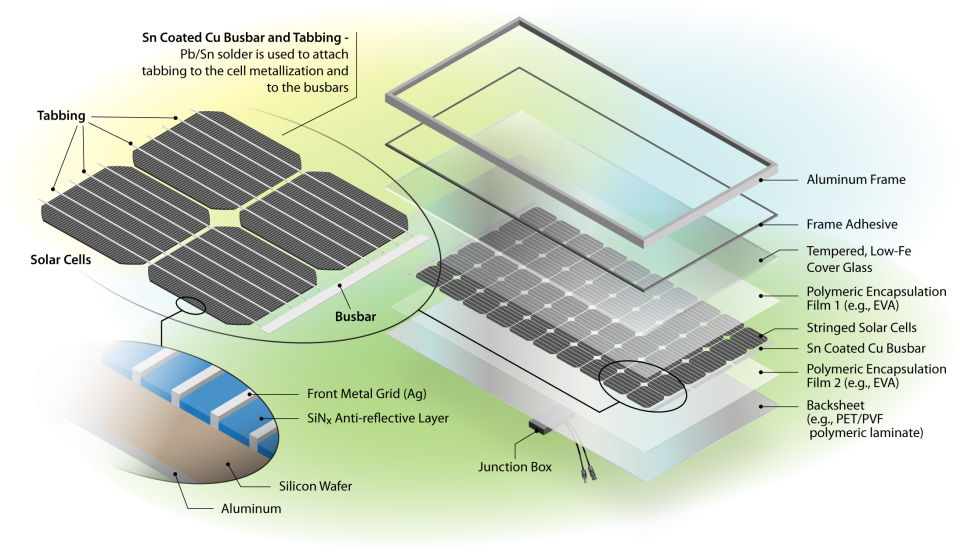How Solar Panels are Recycled
Crystalline-silicon solar technology represents most of the solar panel market share. This type of panel is constructed with an aluminum frame, glass, copper wire, polymer layers and a backsheet, silicon solar cells, and a plastic junction box. The polymer layers seal the panel from exposure to weather but can make recycling and panel disassembling difficult, as high temperatures are often required to loosen the adhesive.
Many of these components can be recycled. Glass composes most of the weight of a solar panel (about 75 percent), and glass recycling is already a well-established industry. Other materials that are easily recyclable include the aluminum frame, copper wire, and plastic junction box.

Other materials located within the solar cells may be more difficult to recycle. Silver and internal copper are valuable components, but panels typically contain very small amounts of these materials. Toxic metals like lead and cadmium may also be present in solar panels.
Solar panels may contain critical material, including aluminum, tin, tellurium, and antimony, as well as gallium and indium in some thin-film modules.
Other components of a solar power system may include inverters, racking, and battery backup systems, which may also be recycled. Inverters may be able to be recycled with electronic waste, and racking may be recycled with similar scrap metals. Battery-based grid energy storage systems may be handled with current battery recycling programs.
An ideal recycling system would recover as much material from solar panels as possible. There are different methods to recycle solar panels, which can include some or all of the following three steps:
The industry is new and still growing, with researchers examining how to commercialize recycling to economically recover most of the components of a solar panel. Elements of this recycling process can be found in all global, but it is not yet happening on a large scale.
Recycling is already established in the glass, metals, and electronics industries, which can accommodate solar panels and other solar power system components. These processes typically involve crushing, shredding, and milling, usually after removal of the frame and junction box. In these processes, glass, aluminum, and copper may be recovered and the other materials, including the silicon solar cells, may be incinerated.
Thin film cadmium-telluride panels, which represent a smaller part of the solar market, undergo a different recycling process. for thin film panels which recover the semiconductor material (cadmium and tellurium) in addition to glass and copper.
You're energy yo ask us about solar panel recycling equipment at anytime.
Contact: Claude Xia
Phone: 86-17746684742
Tel:86-0797-8587898
Email: [email protected]
Add: No.15, Industrial Avenue, Industrial Park, Shicheng County, Ganzhou City, Jiangxi Province